Mushrooms Gain Momentum As Versatile Ingredient And Immunity-Booster
May 25, 2021 | 11 min to read
As the restaurant industry rebounds, mushrooms are gaining consumer interest, particularly as home cooking rises. Retailers must enhance merchandising by ensuring proper handling and showcasing variety, including convenient pre-packaged options. The Mushroom Council promotes health benefits, emphasizing immune support and nutritional value. Moreover, effective cross-merchandising, especially with high-traffic items, can boost sales. With a growing focus on sustainability and health, mushrooms are positioned as versatile, nutritious additions to meals that cater to changing consumer preferences.
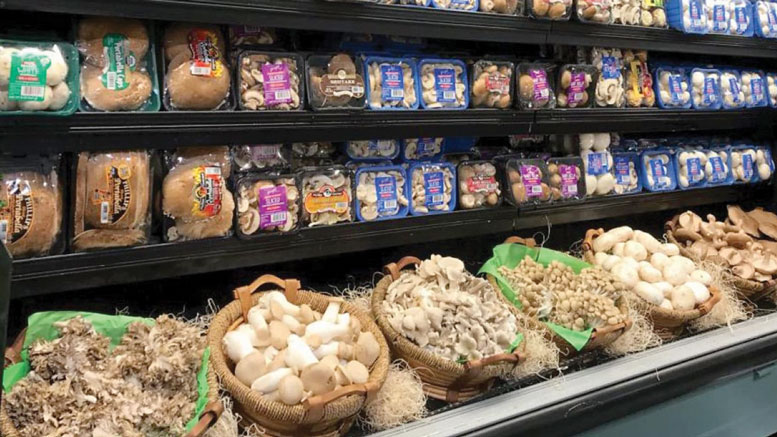
As the restaurant trade continues to bounce back, the industry has an opportunity to build off retail momentum to ensure that mushrooms remain a staple item in the shoppers’ carts.
Originally printed in the April 2021 issue of Produce Business.
In a market where consumers are cooking more at home and curious about how to come up with interesting, healthy meals, mushrooms are generating a lot of additional interest, which makes merchandising an issue of greater importance.
Retailers need to get mushrooms out in front of consumers. To successfully sell them, however, stores must enforce proper handling practices to keep them attractive and fresh but also to ensure consumers have some refrigerator time between purchase and use. Gentle care and the right temperatures are critical issues. At the same time, nutritional and cooking information, and proper assortment, with not only new products to entice but also a mix of whole, slice and ready-to-cook items, can help generate sales across a wider consumer base.
The size of the display and the number of varieties available aren’t the only issues that dictate success of a mushroom program. Rather, balancing space, supply and sales velocity are each important factors in maximizing retail sales.
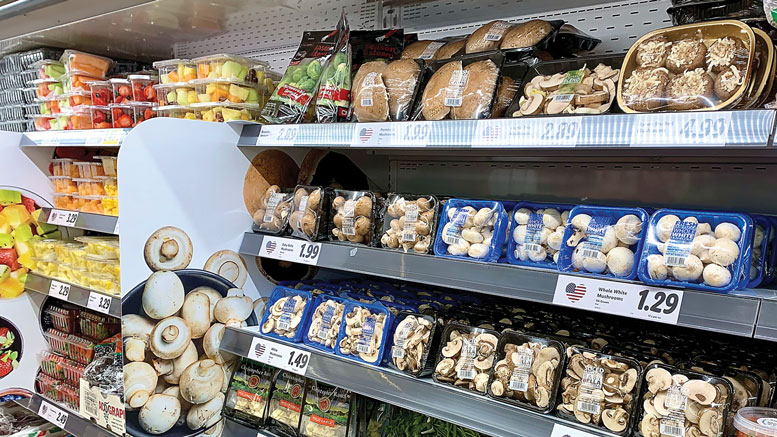
Take Lidl, for example. In Lidl USA’s latest stores, where the company is introducing more produce items and updating merchandising to enhance the visual presentation, the mushroom display is limited but also featured. At one of the most recently introduced Lidl locations, in Merrick, NY, featured signage in the produce cold case highlights mushrooms. The display includes caps, packaged whole white and brown mushrooms and sliced versions of each, along with caps. Although not vast, the signage and positioning of mushroom displays at eye level make a point. Lidl has limited produce space, but the retailer determined to spotlight mushrooms in a specific range of options.
Ysberand Aukes, Lidl regional vice president for Long Island, where Merrick is located, says price and quality are what count in the Lidl produce department, but department size requires that the company prioritize space allotted. Mushrooms don’t get a lot of elbow room, but Lidl makes sure it provides choice that can satisfy as many preferences as possible. So, beyond the basics, the presentation features particular options, including those for the convenience of its busy shoppers.
Convenience is Key
“I think the produce world is moving more toward convenience, packaging and prepared items,” says Bob Sickles, owner of Sickles Market of Little Silver, NJ. “This includes mushrooms. We sell loose, packaged, and packaged sliced or prepared.”
Convenience is an issue particularly in a market where more consumers have been doing more cooking at home, in many cases just about every night, so that having sliced or otherwise prepared products makes the more-frequently-undertaken task easier.
At the same time, consumers have been experimenting with food preparation in efforts made easier by online recipes and videos as well as the convenience of smartphones and smart speakers that can provide what cooks need to know right from a kitchen countertop.
Under those circumstances, it’s not a surprise that Sickles says consumers are looking for more mushroom variety. The broader issue that has generated an increase in cooking at home — the COVID-19 pandemic — has affected the mushroom category in multiple ways. Nutrition and disease prevention are issues that have bolstered mushroom sales. However, consideration of local production, especially as people concern themselves with the economic impact of COVID-19 on their communities, can have an impact as well.
“New to the category are grown locally ‘wild type’ mushrooms like Oysters, Shiitake, Lion’s Mane, and others,” Sickles points out, adding that his supplier, Two River Mushroom Company, based in Long Branch, NJ, is characterized as a hyper-local fresh organic mushroom farm. “These are sold in wooden pints or quarts, over-wrapped, and all one variety or as a mix. They continue to gain in popularity. In particular, certain mushrooms are known to have very positive health benefits, for example Lion’s Mane.”
Overcoming the Challenges
Although the pandemic has had a major effect, the market for mushrooms already had advanced significantly prior. Yet it also has faced challenges including shortage of labor, facilities and compost required to maintain growth of major varieties, not to mention keeping up with technology, says Mark Kreiner, outside sales coordinator for Mother Earth, Landenberg, PA.
“There’s a huge cost involved in making technology align with EDI and customer systems,” he says.
The flipside, he adds, is the size of the opportunity as consumers develop a more “holistic” approach to eating, one that incorporates not just avoidance of problems like obesity but also consumption of nutrients to prevent disease.
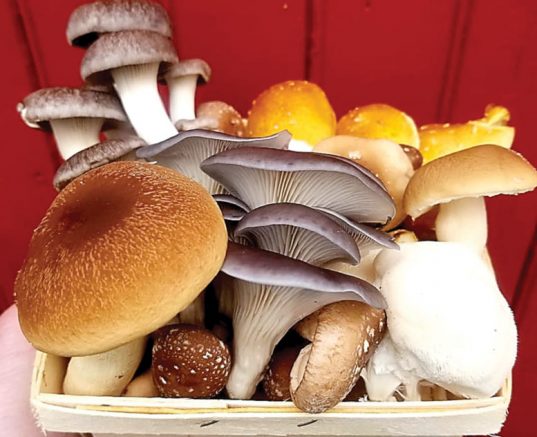
Justin Reyes, national sales and marketing manager, Gourmet Mushrooms, Sebastopol, CA, says, “Overall we’ve definitely seen where mushrooms are trending very well, being among the highest growth products in the produce department, as people focus on healthy living and strengthening the immune system. We were already seeing higher-than-industry growth trends, and we saw a big increase at retail as foodservice shut down. As things reopen, we’re expecting a lot of those trends to continue.”
The pandemic certainly has made consumers more aware of immune health and many are looking for foods that will bolster it, with mushrooms being conspicuous among them. Eric Davis, spokesperson for the Redwood Shore, CA-based Mushroom Council, states that prospects for the second half of 2021 and beyond look good, as disease prevention is on consumer minds.
“Consumer concern for immune health is on the rise, with many viewing the food we eat as playing an essential role in supporting a healthy immune system,” he says. “With mushrooms featuring an array of micronutrients that support immune health, such as Vitamin D, B Vitamins and Selenium, the mushroom industry is learning further into marketing how mushrooms can meet the nutrition needs that are important to today’s shoppers. This can range from collaborating with retailers to highlight mushroom nutrition facts on packaging to specialized consumer nutrition campaigns to introducing new products.”
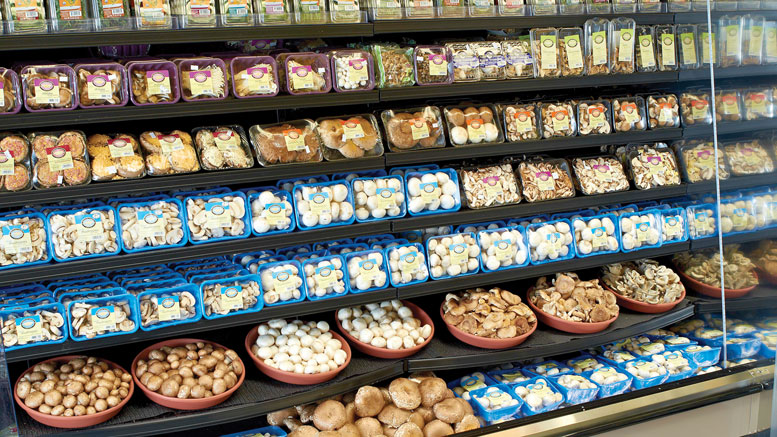
PHOTO COURTESY OF MUSHROOM COUNCIL
At the beginning of this year, the Mushroom Council kicked off a promotional campaign dubbed “Feed Your Immune System” built around a hub website, which informs consumers about the micronutrients found in mushrooms and other select foods, and how they can play a key role in supporting the immune system. The Mushroom Council supports the campaign with social media, collaborations with influential nutritionists and media outreach.
Retailer Role in Health Promotion
Retailers can do more to underscore the health-boosting qualities of mushrooms, Kreiner says, using their own health rating and other nutritional signage to make the point to keep sales momentum growing.
For his part, Joe Salvo, president, Ponderosa Trading Co., Maple Ridge, British Columbia, says, “Public awareness and understanding of the health benefits of eating mushrooms is growing and growing at a fast pace now. You can see this in the ever growing number of companies offering medicinal mushrooms in extracts and capsules. Many of these varieties that are being sold as medicinal mushrooms are culinary mushrooms that we have had here for years, such as Shiitake, Oyster, Maitake, King Oyster and others.”
Greg Sagan, executive vice president, sales and marketing, at Giorgio Fresh Co., Blandon, PA, contends, “Since the pandemic hit, there has been a drastic increase in consumers who have become at-home cooks. Retailers should target customers interested in health and wellness alternatives, and those who love to cook.”
An important point is that promoting mushrooms as something that can add nutrients to everyday dishes can help turn occasional into weekly mushroom purchasers.
Kevin Donovan, national sales manager, Phillips Mushroom Farms, Kennett Square, PA, says, “It’s started to sink in with people. ‘This is why I’m buying mushrooms. I want to get more antioxidants. I want to get more fiber.’ It’s easy. You just throw mushrooms in as you cook. That’s how easy it is.”
The Role of Variety
As interest in cooking with mushrooms has grown, so has curiosity about new varieties, frequently further fueled by the reports consumers have heard about the health benefits of specific species such as Lion’s Mane. To keep mushroom sales lively, says Salvo, retailers should aggressively promote the whole assortment as it grows.
For instance, he says, “listing more varieties, selling at reasonable markups and, most importantly, paying attention to the quality and making sure that staff are trained in proper rotation of fresh mushrooms.”
Evidence certainly suggests consumers are looking for new mushroom sensations.
“White and brown mushrooms continue to dominate the category, but we have been seeing double-digit growth for both specialty and exotic mushrooms,” says Sagan.
An understanding of customer shopping patterns and the typical daily sales of each mushroom item in the produce department are difficult to keep up with but they are critical elements in driving purchases across a product category that has strict handling requirements.
“The product mix is ultimately the best tool you have to optimize sales with your target customers,” says Kevin Delaney, vice president of sales, To-Jo Mushrooms, Avondale, PA. “Mushrooms are very versatile and widely used across many cuisines, so the target customer can change city to city. Our retail partners are really good at understanding their customers and together we find the right mix for their shoppers.”
Care and Handling
More so than is the case with many other produce items, handling and temperature play a crucial role in mushroom merchandising, and, ultimately, shopper satisfaction. Delicate and easily damaged, mushrooms have to be treated carefully in stores before and during presentation on the sales floor display.
In the Produce Marketing Association “Fresh Produce Manual,” the recommendation is for short-term mushroom storage of seven days or less at 32 to 36 degrees. The manual recommends storage of mushrooms in original containers and never in plastic bags. All varieties should be merchandised away from items that have strong odors.
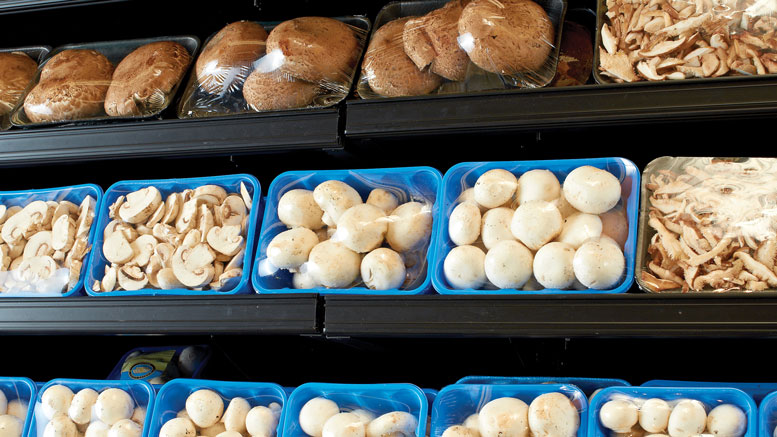
Mushroom growers and shippers overwhelmingly say that the key to proper handling and merchandising is analysis and planning. Retailers should understand what their sales are down to the store level and stock no more mushrooms than will immediately sell through. It’s important to make sure mushrooms aren’t roughed up and that nothing is stored on top of them, but, in the last measure, rapid turnover is the key to merchandising success.
Effective Cross Merchandising
When it comes to core product displays in the produce department, Kriener prefers sets with both conventional and organic items for “one-stop shopping,” he says. However, secondary placement is a significant issue, Kreiner advises, suggesting that retailers place mushrooms in high-traffic locations including near salads for consumers who want to jazz up the meals they are preparing at home.
In cases where they can be kept in the right conditions, locations such as the meat case are appropriate for mushroom satellite displays, perhaps placed with meat cubed for kabobs as grilling season gears up and consumers look for ways of making barbecues healthier. Indeed, he says sliced mushrooms sell particularly well for holidays when people are looking for ingredients for special meals. Given those patterns, he suggests merchandising sliced mushrooms not only with ingredients for holiday eating but, generally, in those conveniences areas of meal components retailers offer today.
Of like mind, Delaney says, “Building secondary displays in high traffic areas is a great way to generate lift without relying on price. Mushrooms are often overlooked as an impulse purchase, but they play the role so well. Since mushrooms can be incorporated into so many recipes, they present an easy choice for families trying to plan meals for the week.”
Organics are an important element in mushroom merchandising and not just for the consumer that generally shops those goods. Donovan says that many consumers who are evaluating mushrooms want to see all their options, particularly when they are interested in buying more in the segment. Because they are often concerned with the nutritional qualities of mushrooms, consumers want to include organics as they weigh their choices.
“When we first started doing organics, we saw that if they were interested in trying out mushrooms, they would be interested in trying out the organic mushrooms. We have more consumers now interested in looking at more information,” he says.
Ponderosa’s Salvo suggests that including packaged mushrooms prominently helps in the struggle to maintain sharp merchandising in store produce departments.
“Bulk product displays, particularly specialty and seasonal wild mushrooms, suffer huge weight loss if left out in the open,” he says. “They also oxidize quickly and not only lose weight but look unsightly within a matter of a day or two. Bulk mushrooms also suffer damage by excessive handling by consumers and staff alike.”
Increasing interest in mushrooms is inevitably leading to demand for more convenient, trendy and/or novel products that make for easy and fun eating.
“Stuffed Mushrooms are very popular amongst consumers, especially since more consumers are cooking at home,” Sagan contends. “We have a line of stuffed mushrooms for various consumer needs. We have added two new flavors this year: Mediterranean and Buffalo. We also have Fiesta Cheese Blend, Cheese and Imitation Bacon Bits Blend, and Artichoke, Spinach and Cheese Blend and Crab flavor, all of which are offered in a microwavable tray.”
Delaney adds, “Value-added products have been a key driver to the mushroom category for the past decade. Consumers are constantly looking for convenience and flavor, and as a whole, our industry has done a great job offering items that check both boxes.”
Appealing to Consumer Sentiment
Sustainability is an issue that will be a consumer focus after the COVID crisis winds down, and it’s another consideration that can drive mushroom sales. Sickles at Sickles Market says one attraction of his supplier Two River is food miles, the distance between where a product is grown and where it’s consumed.
Sagan indicates that retailers should think carefully about how they communicate the range of advantages mushrooms offer to their shoppers, particularly in their role as a replacement for meat, a food getting a rap for being environmentally unfriendly. Consumers today have a whole variety of reasons to purchase mushrooms.
“It’s essential that retailers cater to their shopper base and personalize merchandising materials,” he says. “Promoting mushrooms’ attributes, such as healthy, low calories, tasty, easy to use, flexible in recipes and meat substitutes, is a great opportunity for retailers. Show the versatility of mushrooms.”
11 of 17 article in Produce Business May 2021

